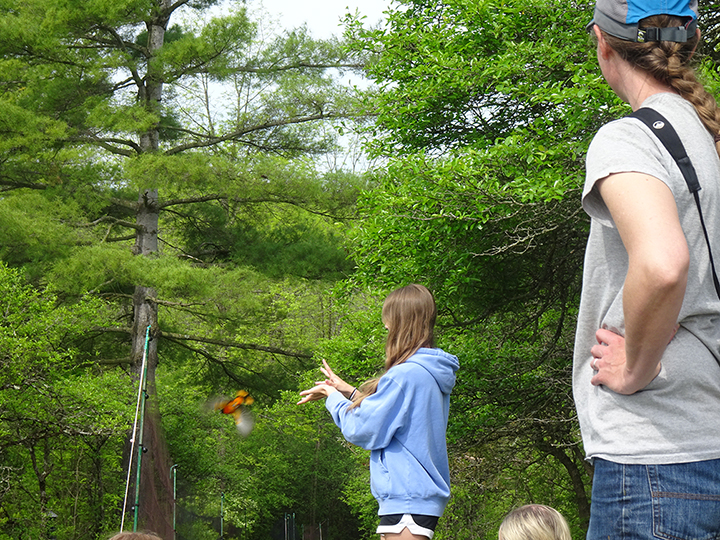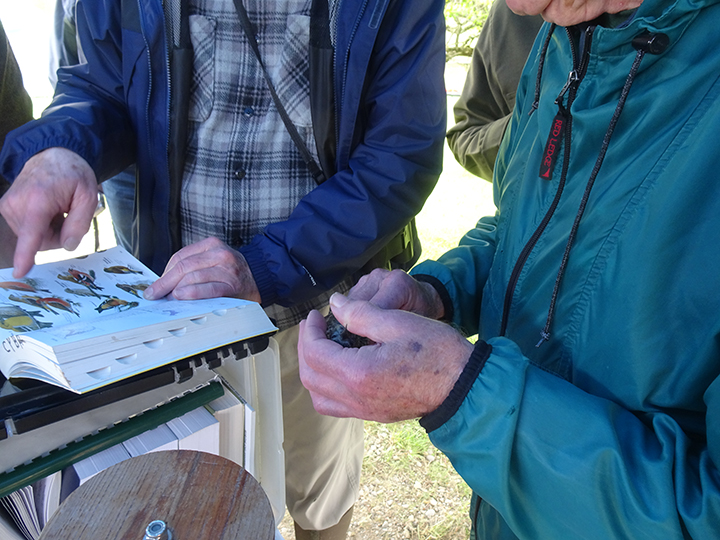
Outdoor Adventures with Gary Lee - Vol. 259
I spent the week at the Crown Point Banding Station where we had enough rain on a couple of days that we had to close the nets. One night a thunderstorm rolled through that put me to sleep but it knocked down some birds that we caught the next morning. Most of the other days it was haphazard.114 birds were seen or heard in the trees and sky around the site, but many never got into our mist nets. We had a total of fifty-one different species banded.
Not so with a new bird for the site that we caught a juvenile Red Crossbill. There was a small flock of ten or twelve flying around the site feeding on the big white pinecone crop. We caught a second Juvenile the next day. This bird was never on our site list as they would normally be gone north by this time. When they are around and there is a good cone crop, they will nest and have young during the winter months, as do White-winged Crossbills and Pine Siskins. With all the Pine Siskins that I’ve banded this spring, many of them were young born during the winter somewhere south of us that had a big cone crop. I have banded around two hundred in the last month and a half, and they are still coming as I look under the feeders and there are many that are not banded. A small bear found the feeders the night before I came home and had a snack.
I will get the electric fence back up and feed again when the bugs taper off. I had a deer fly bite me as I was feeding the trout. That would be a first as they usually came out in July and August for years now, they are out and biting in May. When they came out for years the blackflies were done except at higher elevations. There are no blackflies at Crown Point as there are no cold running streams nearby. We did have a few mosquitoes and only a couple June bugs were seen but none in the nets which are not fun to take out just before breakfast.
For years, the Yellow rumped Warbler was the leader in numbers caught and banded and some years they would compete with the American Goldfinch, but I do not remember the Goldfinch ever winning. One year we banded over six hundred of the Warblers and two years ago it was down to one, as they had already gone north before we got our nets up. This year we caught a few Yellow rumps but no record for sure as many were already on territory. Then for a change it was the Blue Jays against the Gray Catbirds, but the Catbirds never won. Two years ago, there were over 350 Blue Jays that we banded. This year there were some Blue Jays but nowhere near the leader in the count. We did catch and band several Gray Catbirds, Baltimore Orioles and Common Grackles, but they could not keep up with the White-throated Sparrows which we caught every day and ended up with 140 to win top honors. That is a bird that many people hear as they visit the Adirondacks as these birds live around most every lake and stream in the Adirondack Park. They sing their Sam Peabody, Peabody, Peabody song that most visitors can mimic.
We had many good volunteers this year both picking and banding birds under supervision. Some are trying to get a Federal License to band and keep a record of birds taken out of the net and bird species banded for that process. A few others helped us with setting up and taking down the site tents and nets which makes things go very smoothly. The Crown Point Historic Site Manager and his staff are helpful with garbage, grass mowing before we set it up and during the two weeks we are on site.
This year there is a group of students from Syracuse University who are doing an archaeological dig in various places on the site. Some where no one has ever done any digging and in others where soil had been moved but never looked through. They had a drone flying over the site that mapped contours of the site where they plan to dig, some showing some of the features of the site when it was inhabited, some by the French and some by the English. At times there were a few thousand people on the site and old maps show where some lived and the structures that were outside the fort walls. Some of this mapping can pick up those sites. They will be working on this project for two years and they will probably find some interesting things as did the last dig a few years back.
Banding Hummers this weekend is not going to happen maybe on 4th of July weekend but that’s another story. See ya.
Photo above: Student bird male Baltimore Oriole gets released
